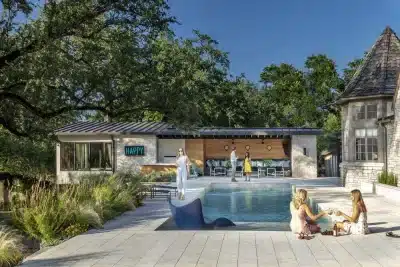
It can come as a surprise that interior design demands a sharp and informed eye. While you might spot something appealing while shopping, it doesn’t guarantee it will suit your home perfectly. The essence of interior design lies in grasping how color, lighting, room dimensions, scale, and arrangement influence the appearance of items in a space and determine their impact on the overall room design. Numerous common errors crop up in interior design practices. Here, we delve into the top blunders and provide tips on sidestepping them.
Opting for Overly Trendy Styles
It may be alluring to keep up with the current design fads, but being overly trendy can backfire. Trends are fleeting, and investing in furniture or accessories that are too trendy can swiftly age your space.
Concentrate on timeless design features and add trends in smaller, budget-friendly items that can be easily changed. Staple items like a beautifully crafted sofa, a high-quality area rug, or a striking lighting fixture will endure and offer a strong base for your interior design.
Seek Assistance and Interior Design Guidance
The average homeowner may find it challenging to notice errors when pondering the same room design for months. Sometimes, a fresh perspective is needed to identify issues. While seeking a friend’s honest view on colors, fabrics, or room layout is okay, hiring an interior designer for expert guidance might be more practical. They possess abundant design insights that can elevate your home.
Remember that being open to suggestions doesn’t imply you must follow them. Your home design is distinctively yours; if you adore it, that’s what counts. If you are looking for a Washington, DC interior design company, consider contacting Lisa & Leroy. They offer personalized design services to help you avoid common mistakes and achieve your dream home.
Avoid Pushing Furniture to Walls
Thinking that pushing all your furniture against the walls will make your room seem bigger is a misconception. Opt for arranging furniture away from the walls in well-thought-out and appealing arrangements to create harmony, natural flow, and defined spaces in your room.
Pay attention to your furniture layout, which is crucial in defining your room. Place your furniture intentionally to maintain a well-designed environment. Use benches and footstools not just for extra seating, but also to establish open spaces within your room.
Avoid Choosing Rugs that Are Undersized
Placing a small rug at the center of a spacious room creates the illusion of a smaller space and lacks visual impact. Although large area rugs can be costly, it’s often preferable to forgo a rug entirely rather than disrupt the room’s harmony. Many interior designers recommend beginning with the flooring.
The rest of the room’s design should combine seamlessly by starting with the rug’s size and color. Ideally, the rug should touch all furniture pieces, but learn how to measure a rug to ensure a perfect fit in any room size.
Omitting Character
Trying to replicate the showroom display in a store can be enticing. While the design may appear well thought out and cohesive in that setting, transferring it to your own living space may result in a showroom-like feel.
A room where everything matches may lack individuality. It’s better to mix things up, ensuring pieces complement each other while coming from diverse sources and collections, reflecting the owner’s taste. The excitement lies in discovering pieces that harmonize well together.
Endnote
To prevent these typical interior design errors, you can craft an aesthetically pleasing and practical space. Feel free to consult a professional interior designer for guidance in bringing your ideal space to life.








